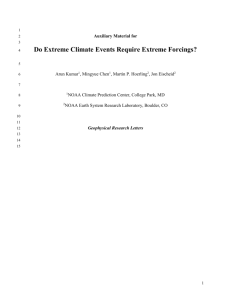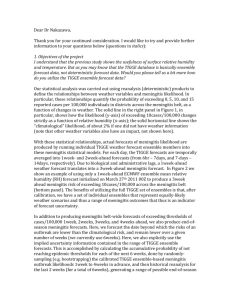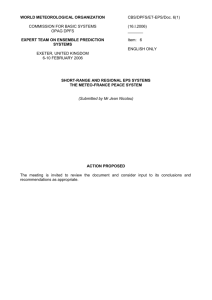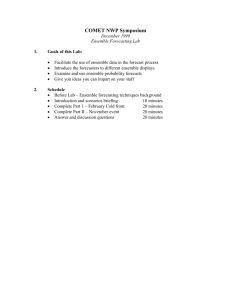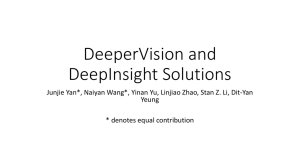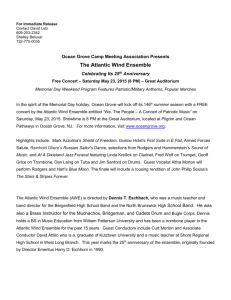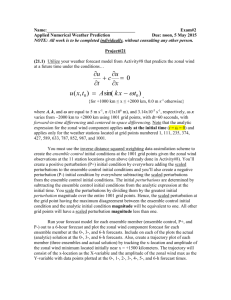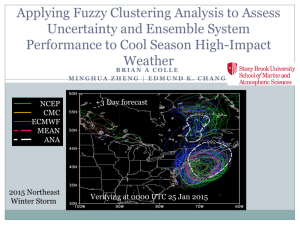UCAR_TIGGEforecasts
advertisement
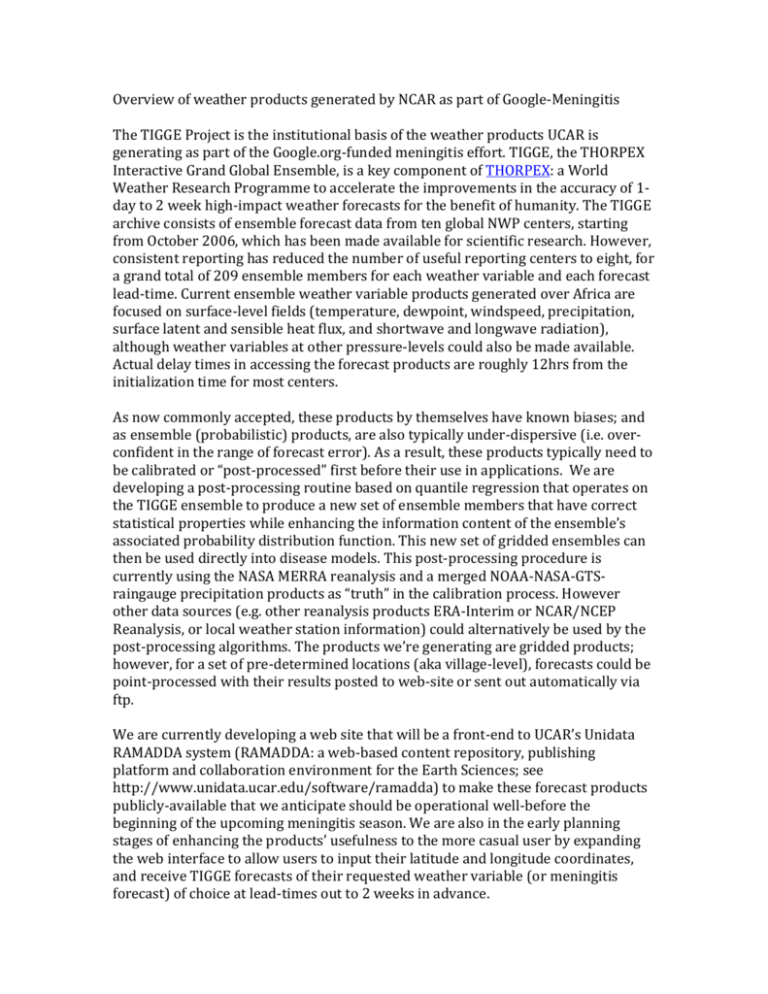
Overview of weather products generated by NCAR as part of Google-Meningitis The TIGGE Project is the institutional basis of the weather products UCAR is generating as part of the Google.org-funded meningitis effort. TIGGE, the THORPEX Interactive Grand Global Ensemble, is a key component of THORPEX: a World Weather Research Programme to accelerate the improvements in the accuracy of 1day to 2 week high-impact weather forecasts for the benefit of humanity. The TIGGE archive consists of ensemble forecast data from ten global NWP centers, starting from October 2006, which has been made available for scientific research. However, consistent reporting has reduced the number of useful reporting centers to eight, for a grand total of 209 ensemble members for each weather variable and each forecast lead-time. Current ensemble weather variable products generated over Africa are focused on surface-level fields (temperature, dewpoint, windspeed, precipitation, surface latent and sensible heat flux, and shortwave and longwave radiation), although weather variables at other pressure-levels could also be made available. Actual delay times in accessing the forecast products are roughly 12hrs from the initialization time for most centers. As now commonly accepted, these products by themselves have known biases; and as ensemble (probabilistic) products, are also typically under-dispersive (i.e. overconfident in the range of forecast error). As a result, these products typically need to be calibrated or “post-processed” first before their use in applications. We are developing a post-processing routine based on quantile regression that operates on the TIGGE ensemble to produce a new set of ensemble members that have correct statistical properties while enhancing the information content of the ensemble’s associated probability distribution function. This new set of gridded ensembles can then be used directly into disease models. This post-processing procedure is currently using the NASA MERRA reanalysis and a merged NOAA-NASA-GTSraingauge precipitation products as “truth” in the calibration process. However other data sources (e.g. other reanalysis products ERA-Interim or NCAR/NCEP Reanalysis, or local weather station information) could alternatively be used by the post-processing algorithms. The products we’re generating are gridded products; however, for a set of pre-determined locations (aka village-level), forecasts could be point-processed with their results posted to web-site or sent out automatically via ftp. We are currently developing a web site that will be a front-end to UCAR’s Unidata RAMADDA system (RAMADDA: a web-based content repository, publishing platform and collaboration environment for the Earth Sciences; see http://www.unidata.ucar.edu/software/ramadda) to make these forecast products publicly-available that we anticipate should be operational well-before the beginning of the upcoming meningitis season. We are also in the early planning stages of enhancing the products’ usefulness to the more casual user by expanding the web interface to allow users to input their latitude and longitude coordinates, and receive TIGGE forecasts of their requested weather variable (or meningitis forecast) of choice at lead-times out to 2 weeks in advance.

